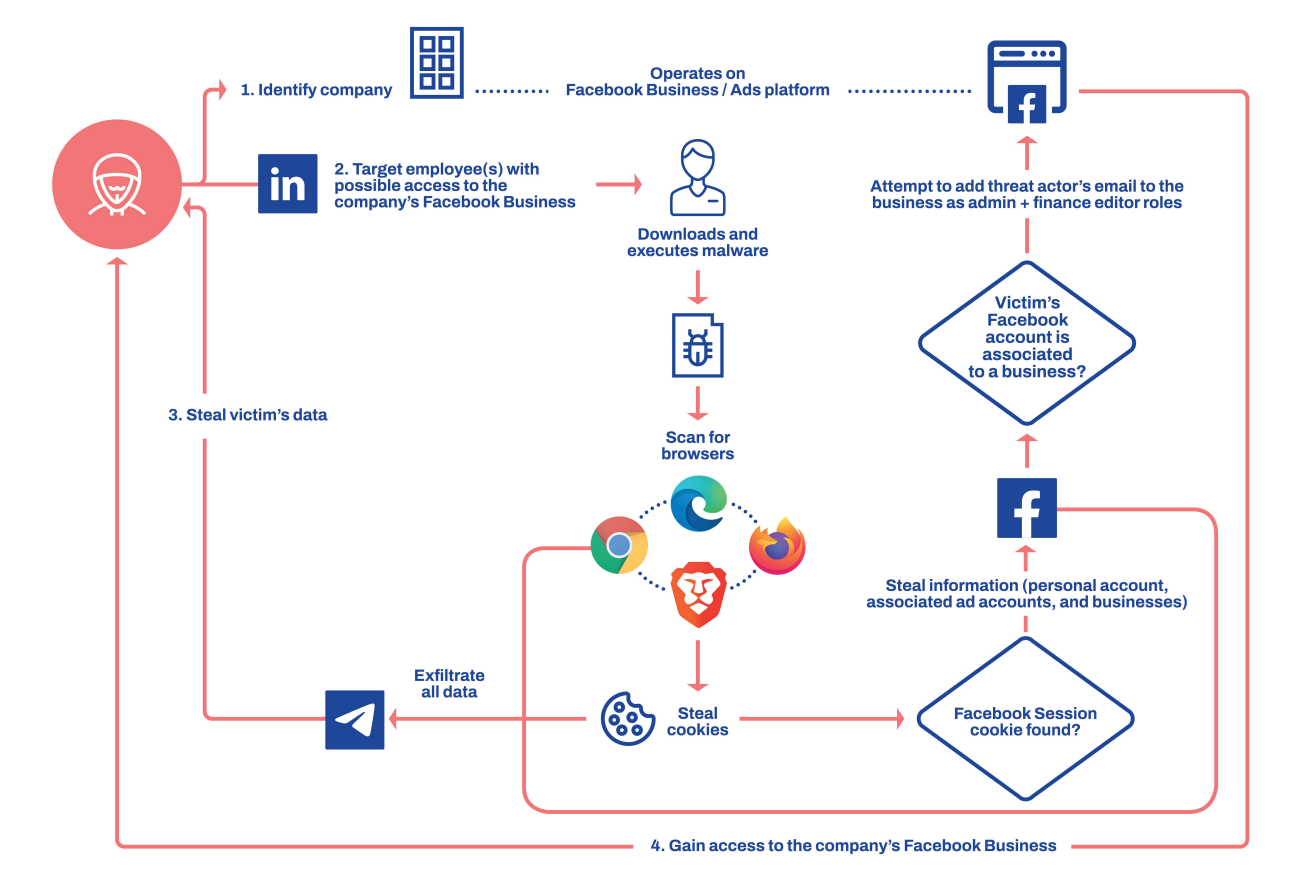New malware is targeting LinkedIn and then finding targets on both individuals’ and organisations’ Facebook Business accounts. This malware was first reported by WithSecure Cybersecurity firm.
(Enterprise spin-off F-Secure), This DUCKTAIL can hijack your FB Business account, which uses Facebook’s Ads and Business Platform.
DUCKTAIL first surfaced earlier this year, and, after conducting various analyses and tracking, WithSecure confirmed it was active since Q2 of 2022. It works quite identical to other malware, It spreads and primiary used to target regular Facebook users.
NEWS: WithSecure™ has discovered a new Infostealer Malware, dubbed “DUCKTAIL” which can hijack Facebook Business accounts https://t.co/lUnm6R5l3h#CyberAttack #cybersecurity #malware #Facebook pic.twitter.com/2kkjPExFwI
— WithSecure™ (@WithSecure) July 26, 2022
The malware is designed to steal browser cookies and take advantage of authenticated Facebook sessions to steal information from the victim’s Facebook account.
DUCKTAIL could ultimately hijack any Facebook Business account to which the victim has sufficient access. pic.twitter.com/wvUBABoIC6
— WithSecure™ (@WithSecure) July 26, 2022
Infostealer malware was used to create this (DUCKTAIL), Which was designed to hijack the Facebook Business account. How DUCKTAIL Malware Works, it stole your session cookie from the Victim’s browser and used it to unlock a Facebook account to access individual accounts.

The main goal is to take over your Facebook Business account, and this give them acess to edit credit card details and transaction information. Most likely, they run their own advertisement campaigns, and this can finanically damage the company without notice.
How to Protect your Facebook Business account from malware
Staying safe from such malware is important despite using your organisation’s Facebook account. This has been unnoticed for a while. They used to find you from Pro-Social networks like LinkedIn and target the potential Facebook user.
LinkedIn profiles mostly have high-level access to Facebook Business with admin Privilege. Which later used by Such Social Engineers (attackers) used to download the data and store it over cloud storage like Google Drive, Dropbox, iCloud or others. Phishing process also shows your senstivie data, Which includes the Company data, its client, and the advertising dynamics.
To protect yourself, it’s important that you have enabled your 2FA on your Facebook account. So even after gettings a cookie then still need to enter the code to access it. Also, you should review third-party apps connected to your Facebook and only allow trusted applications.
Enable 2FA on Facebook
- Open security and login from the Facebook settings appear in the upper-right corner.
- Under settings, Click on Edit and go to Two-Factor authentications.
- Turn on to enable 2FA on Facebook.
- Follow the on-screen instruction to set up like approval device, Text message, 2FA authenticator, Physical USB Key or more.
- That’s it!
Therefore, You are advised to have a good password with a combination of Upper-Case characters, Numbers, Symbols or more, to remember you can use Password Manager from Google, or your choice.. Else, you can use the Password Generator from Avast, or any other based on your perference to create a unique blend of Password to improve security.
Recommended Post
Romeshwar Prasad
- Download Android 14 crDroid v10 for Poco F4by Sandeep Gautam
- Download Android 14 crDroid v10 for Poco X5 Pro 5Gby Sandeep Gautam
- Download Android 14 crDroid v10 for POCO X3 (NFC)by Sandeep Gautam
- Download Android 14 crDroid v10 for OnePlus 7T Pro 5G Mclarenby Sandeep Gautam
- Download Android 14 crDroid v10 for Redmi Note 8/8Tby Sandeep Gautam



